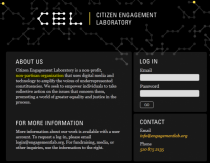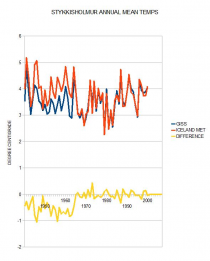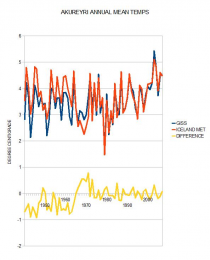
|
Jan 31, 2012
The Cost of Obama’s Green Appeasement
Bob Beauprez
This weekend’s Boston Globe Magazine will feature a gargantuan, 3600 word homage to rabid environmentalism in the form of a profile on 350.org founder Bill McKibben. The piece and President Obama’s disastrously short-sighted decision Wednesday to reject permitting for Transcanada’s Keystone XL pipeline are both symptomatic of a much larger ailment plaguing liberal politicking in general and the Obama administration in particular: a continual willingness to sacrifice the well-being of the majority for an elite, hypocritical minority.
The Keystone project, a 1,700-mile pipeline that would bring crude from Alberta’s oil sands to U.S. refineries on the Gulf Coast, has the potential to create hundreds of thousands of direct and indirect decent-paying American jobs and reduce our dependency on the oil of despotic, anti-western nations with questionably sane leaders. But radical environmentalists like McKibben - a second generation jailed protestor and disciple of John Kerry - seem either not to know or else don’t care what real poverty looks like. And he is among the leaders of the voting contingent to which our president is pandering - purely for political reasons.
The Harvard-educated McKibben, who was among the 1,252 people arrested during protests against the pipeline outside the White House last year, is on a mission to “end the tyranny of oil” and coal. Along with his worship of the false god of climate change, McGibben like many leftist elitists is committed to “social justice” according to the Globe. What McGibben and his ilk overlook is that real social justice begins with a job, the dignity of work, and the ability to care for and feed one’s own family. McGibben & Company’s quest is anti-jobs and therefore anti true social justice.
According to analysis released just this week by the Brookings Institution, child poverty has risen 4% in the past five years - an addition of 3 million impoverished kids, most of them added in the time Obama has been in office. The state with the highest rate? Mississippi, in the Gulf Coast - the very region in which many of the Keystone XL’s quarter-million jobs would have been created, and where the Obama administration’s six-month deepwater drilling moratorium cost Americans tens of thousands of jobs. T.V. talk show host - and Obama supporter - Tavis Smiley said recently, “Many of the ‘new poor’ are the former middle class.”
Obama claims to be “all in” for domestic energy production and job creation, but when handed a no-brainer like Keystone, he choose to side with a radical minority of his base. Why? As Michael Brune, the head of the Sierra Club said, “it shores up the base, definitely”.
On Capitol Hill there has been almost universal silence from Congressional Democrats who apparently are listening to that same “base.” So, what does that say about what agenda really drives the Democratic Party? Politico.com says that according to a “top Democratic fundraiser” the issues driving the party donors are “Keystone and gay marriage.”
Obama and the Democrats may soon grow to regret the Keystone decision. There are about 25 million Americans unemployed, under employed, or that have given up even trying to find a job. If you’re out of work or struggling to get by, a politician focused on killing jobs and promoting gay marriage probably doesn’t sound like one that has your best interests at heart.
Besides all jobs we now stand to lose out on, we also face a considerable new security challenge in the form of a bolstered China. As Rep. Steve King of Iowa said this week: “If we block [the pipeline] that oil will certainly go to China. It will enrich their economy.” Canadian Prime Minster Stephen Harper has no intention of waiting for the United States to reverse this wrongheaded move; his goal is to see Canada at the forefront of the energy game. Harper will travel to Beijing next month, where he will likely take part in talks on selling his country’s vast oil supplies to the Chinese government. And China is serious about quenching its thirst for oil.
“Chinese firms aren’t just buying stakes, they’re buying whole operations,” reads a piece this month in Canada’s daily Globe and Mail. “It’s a new phase of China’s step-by-step Canada strategy. It will change not just the oil patch but Canada’s foreign policy. And a game of international energy politics is afoot in Canada’s West.”
When Obama finally turns around for a gander at his fellow Washington backers on this latest political choice, he will see he has precious few.
Jan 25, 2012
Shale Opponents Turning Science Into Farce
GWPF
The academic face of the anti-fracking movement - Cornell marine ecologist Robert Howarth - increasingly looks like he’s willing to turn science into farce.
Last spring, the once-obscure professor became the go-to expert for anti-fracking journalists and lawmakers when he published a report claiming shale gas pollutes more than coal. The New York Times featured his study in two uncritical articles in one week, he was interviewed on dozens of talk shows - and the media echo chamber did the rest: He was a star.
Since then, other scientists have almost universally challenged his findings - but now he’s doubled down.
Last week, Howarth released another scientifically questionable study, now warning that fracking could push the world over a tipping point, sending temperatures irreversibly higher - an inflammatory and demonstrably incorrect assertion.
Here’s the backstory. Shale gas is acknowledged as an ideal “bridge fuel” to a cleaner energy future. It’s become cost-attractive thanks to fracking: a proven extraction technique used for decades, technologically tweaked to mine shale gas - notably the Marcellus Formation beneath a large swath of New York.
Thanks to fracking, America is poised to transform itself from a fuel pauper, dependent upon the whims of Mideast madmen and Russian oligarchs, into an energy exporter.
But hard leftists have always opposed any energy other than wind or solar. That’s where Howarth and the anti-fracking Park Foundation come in.
In an interview, Howarth told me his goal was to make the anti-fracking movement mainstream and fashionable. He said he met with the Ithaca-based foundation two years ago, agreeing to produce a study challenging the conventional wisdom that shale gas is comparatively clean.
The polluting impact of shale gas revolves around one key issue: how much methane gas is released during extraction. Methane has more short-term global-warming impact than any other fossil fuel. Howarth emerged from academic nowhere when he claimed shale-gas wells leak like sieves, venting methane half the time, spewing 7 percent to 8 percent of reserves into the atmosphere.
“That’s absurd,” says Michael Levi, director of the Program on Energy Security and Climate Change at the Council of Foreign Relations. “Most methane gas is either “delivered to sales” with no leakage, or it’s burnt off through flaring, which diminishes its greenhouse impact.”
Renowned geologist Lawrence Cathles, also at Cornell, who published a scathing deconstruction of Howarth’s paper this month, says that he “doesn’t document venting but what the industry calls ‘capture.’”
Almost every independent researcher - at the Environmental Defense Fund, the Natural Resources Defense Council, the Energy Department and numerous independent university teams - has slammed Howarth’s conclusions. At a minimum, the evidence suggests he either acted in bad faith or is ignorant of gas technology.
The core problem: Howarth uses Environmental Protection Agency estimates dating to 2007 - ancient data, given how quickly the technology is evolving.
Crucially, he fails to account for innovation. Gas lost through leakage is money lost, literally into thin air. For that reason, new wells are now “green completed” - meaning most leaking gas is captured and sold rather than vented.
Cathles notes the latest Devon study, now being verified by the EPA, documenting that shale gas is vented in only 5 percent of wells. The Energy Department estimates only 1 percent to 2 percent of methane is now lost during production.
Bottom line, almost all nonindustry-linked researchers believe Howarth exaggerates the impact of shale-gas leakage by 10 to 20 times. “His conclusions are more a politically charged articulation than a balanced scientific assessment,” Cathles says.
Howarth hired an aggressive PR firm, the Hastings Group, to promote his politicized viewpoint. Scientists aren’t buying it, but many journalists fall for the fear-mongering.
Howarth doesn’t have to convince anyone he’s right to devastate New York’s budding shale industry and put tens of thousands of jobs into question. He wins if he muddies the waters enough to give cautious Albany bureaucrats reason to stall.
Almost every news story now frames this issue as a standoff between equally valid scientific experts. In fact, it’s really a debate between science and ideology.
Jon Entine is a senior research fellow at the Center for Health & Risk Communication at George Mason University/STATS.
Jan 23, 2012
Forecastthefacts.org - Political Activists Gagging Our TV Meteorologists on Climate Issues
By Michael A. Lewis, PhD. and Anthony Watts
Some one or some organization is attempting to influence the upcoming annual meeting of the American Meteorological Society (AMS).
According to WCTV-TV’s story Urging American Meteorological Society to Get Tougher on Climate Change, a program called Forecast the Facts is attempting to lobby the AMS to change their 5-year policy on climate change to a new policy “drafted by a panel of [unidentified] experts” (emphasis added).
A new campaign, Forecast the Facts (www.forecastthefacts.org), launches Sunday to pressure TV meteorologists to inform their viewers about climate change. The launch coincides with the kick-off of the American Meteorological Society’s (AMS) annual meeting in New Orleans, LA.

Enlarged.
“This is an important moment in the history of the AMS,” said Daniel Souweine, the campaign’s director. “It’s well known that large numbers of meteorologists are climate change deniers. It’s essential that the AMS Council resist pressure from these deniers and pass the strong statement currently under consideration.”

The “Campaign Director” is identified as Daniel Souweine. The Forecast the Facts web site turns out to be a product of “Citizen Engagement Laboratory (CEL).”
And who is the Chief of Staff of CEL? You guessed it: Daniel Souweine. Here’s his Facebook page.
The web site describes CEL as: “a non-profit, non-partisan organization that uses digital media and technology to amplify the voices of underrepresented constituencies. We seek to empower individuals to take collective action on the issues that concern them, promoting a world of greater equality and justice in the process.”
But as we see elsewhere, in the green incubator building description of CEL at the David Browner Center at 2150 Allston Way, Berkeley, CA, that “non-partisan” claim doesn’t match this description:

So much for the “truth in advertising”.
They also go to trouble to obfuscate their website domain, here is the WHOIS results for forecastthefacts.org and .com:

Interesting thing though, is that when you check to see what other web servers are at the same domain IP address, you discover a whole flock of political activist websites.
READ MUCH MORE AND SPREAD THE WORD.
UPDATE: Forecastthefacts.org (operated by Citizen Engagement Lab) is a George Soros funded activist website. Here’s the proof (h/t to WUWT reader Jan). See.
Jan 21, 2012
Time to get greens off the backs of Africans
by Cyril Boynes, Jr. (Congress of Racial Equality)
While on extended leave in New York, I often pondered conditions in this huge city, versus in Uganda and most of Africa. Perhaps most of all, I reflected on electricity and the economic activity, modern living standards and improved health that this amazing technology makes possible. I thought about that as I read articles about climate change “reparations” and other foreign aid, oil and gas discoveries in Africa, and impediments to African electricity and economic development.
Several European and US energy companies recently announced major natural gas discoveries in East Africa, both onshore and offshore. Other companies are using hydraulic fracturing to unlock natural gas from the continent’s shale rock formations.
There is a lot of talk about building LNG (liquefied natural gas) terminals to ship gas overseas. “I’m convinced that in 10 years’ time Tanzania, Mozambique and Kenya will together form a major gas hub for Asian and Far Eastern markets,” Cove Energy CEO John Craven told the Wall Street Journal.
There is a lot of gas in West Africa too, especially in Angola and Nigeria, and companies are often criticized for “flaring” gas - burning it off at the wellhead, instead of using it for something productive. (The same thing happened in the United States, until people figured our how to use this previously unwanted byproduct of oil production to heat homes, generate electricity, and make fertilizers, plastics and chemicals.)
Why should this valuable energy resource be flared? In fact, why should we just talk about sending it to Asia, the Far East and other markets? Why aren’t we talking more about using it right here in Africa?
Why aren’t we talking more about using it right here in Africa?
East African gas could easily be used all over the Great Lakes region to generate electricity for homes and businesses, hospitals and schools, jobs and economic growth - turning dreams into reality. All we’d need to do is provide legal, tax and other incentives to attract investors who could build a few gas-fired generating plants and pipelines to connect them to gas fields.
There would still be plenty of gas for export, but the reliable, affordable electricity would launch an economic boom unlike anything we have ever seen.
That’s what happened in the southeastern United States, when the Tennessee Valley Authority began building hydroelectric dams and other projects. One of America’s poorest regions was transformed into an economic powerhouse. Dams built in the Southwest and Pacific Northwest regions of the USA during the Great Depression did the same thing.
Recognizing the immense value of electricity, South Africa is racing to build the Medupi coal-fired power plant and many other generators and transmission lines. In just one example, when an electrical line finally reached a remote area of the country, two furniture makers were able to install power equipment, hire local workers, sell far more furniture of much higher quality - and help launch a local economic revolution that has enabled families to improve their living standards greatly.
Just imagine what could happen if people all over Africa could have access to affordable electricity, 24 hours a day, 365 days a year!
Meanwhile, Ghana is building a 130-MW gas-fired power plant, even though the US Overseas Private Investment Corporation refused to support the $185-million project. Other investors stepped forward, the plant is being built, the country will send some of its abundant natural gas to the plant, and numerous Ghanaians will finally enjoy the blessings of modern living through electricity.
Just imagine what could happen if people all over Africa could have access to affordable electricity, 24 hours a day, 365 days a year!
As Zambian Dambisa Moyo and South African Leon Louw have often said, foreign aid causes more harm than good- whether it is traditional aid or new-fangled “climate reparation” aid. Most of it ends up in just a few hands. Poor families see little or no improvement in their lives. And people have few incentives and little money to make investments, launch businesses or improve their homes and communities.
Foreign aid keeps people alive, but barely. It ties them to international welfare, in perpetual poverty, with little or no chance to become middle class.
Let them eat cake!
Access to electricity changes everything. It puts people in charge of their future. It unleashes the human spirit, and people’s innovative and entrepreneurial instincts. It gives people one of the most important tools they need: affordable, reliable energy for lights, refrigerators, computers and machinery - along with good jobs, so that they can afford electricity, more nutritious food, healthcare and other basics.
Some say putting more carbon dioxide into the air from burning natural gas will affect the climate. However, many scientists say CO2 plays only a minor role in climate change - and Africans already put millions of tons into the air by burning wood, grass and dung, which are far less efficient fuel sources and cannot generate electricity.
The rest of the world - especially Europeans, Americans, Chinese and Indians – are burning enormous amounts of coal and natural gas to generate the electricity that runs their countries. Why shouldn’t Africa? Besides, carbon dioxide makes plants grow better, even in droughts, and companies like General Electric are developing cleaner, more efficient gas turbine technologies that African nations could purchase.
Kenya, Uganda and other African countries would not need extensive gas pipeline systems. They just need to build a few pipelines to carry gas to large generating units that would provide electricity for homes, hospitals, schools, shops, factories and water treatment plants. Miracles would happen.
As my wife, businesswoman and fellow malaria and economic development activist Fiona Kobusingye, has pointed out, “Not having electricity means millions of Africans die every year from lung infections, because they have to cook and heat with open fires; from intestinal diseases caused by spoiled food and unsafe drinking water; from malaria and other diseases that we could prevent or treat if we had proper medical facilities.”
All that would change if our countries had electricity.
The modern world runs on electricity. It’s time for Africa to take its rightful place among the healthy and prosperous nations of the world. Our growing supplies of natural gas could help make that happen.
Cyril Boynes, Jr. is co-chairman of the Congress of Racial Equality - Uganda.
Jan 19, 2012
The Icelandic Saga Continues
By Paul Homewood
Just to recap, we have learnt that GISS temperatures for Iceland and Greenland have been artificially adjusted, with the result that current temperatures appear much warmer than when compared with the warm period during the 1940’s. Temperature data for Reykjavik from the Iceland Met Office confirmed that this adjustment was wholly artificial and resulted in a net warming of about a half a degree centigrade since 1940 and that the actual mean temperatures in the last decade are about a degree less than GISS show.
I also have data from the Iceland Met Office for two other stations, Stykkisholmur and Akureyri and these show the same pattern of adjustments as the graphs below illustrate.

Enlarged.

Enlarged.
In both cases the temperatures from 1940 to 1964 have been adjusted downwards, and as with Reykjavik the overall effect is to create about a half a degree of warming.
On further investigation, it appears that the adjustments have actually been carried out by GHCN, whose figures GISS use. The changes seem to have taken place when they issued a revised version, 3.1, of their database in November 2011. The GHCN website gives access to all their stations and shows both adjusted and unadjusted data. Examination of these records confirms that, out of eight stations in Iceland, seven have had such artificial warming applied, e.g

Enlarged.
The top right hand graph (red) is the unadjusted version, middle one is adjusted, and the bottom one graphs the adjustment (blue is minus, red plus).
Evidence is already building up that these adjustments are not limited to only Iceland. Similar adjustments have already been found in Greenland, Ireland and Scotland.
This issue raises several points of concern :-
1) These are palpably not “one-off” adjustments, which might be justified for station location changes or other local reasons. Have they been made as a result of a deliberate decision by GHCN, or are they the result of an error or a faulty piece of software?
2) If the result of error, what does this tell us about the quality control procedures at GHCN and GISS?
3) How many other similar adjustments have been made previously that have not been spotted? Would these have been uncovered without the attention of independent observers?
4) If GHCN believe the adjustments are justified, why have they not published their results and reasons for discussion, before issuing the revision? According to their CHANGELOG “GHCNMv3.1.0 is released with several minor corrections and a reworking of internal arrays for more efficient operations.” No mention of large scale temperature adjustments!
5) What assurance do we have that more changes of this sort won’t be made in future?
|
|
|
|









